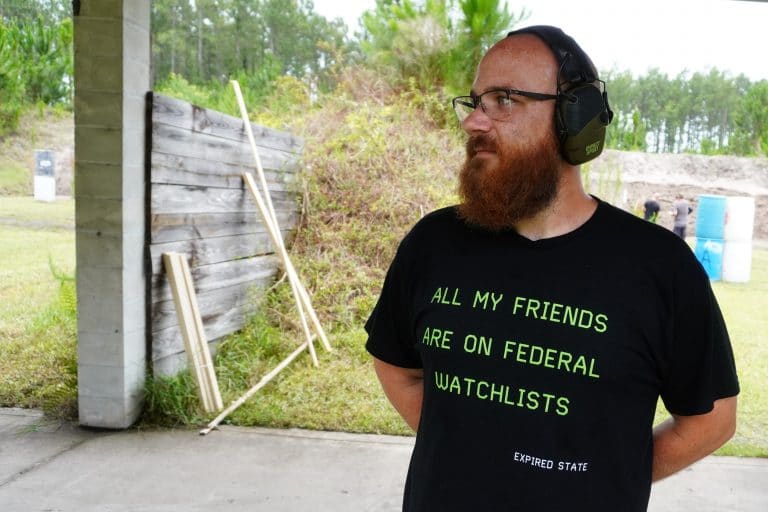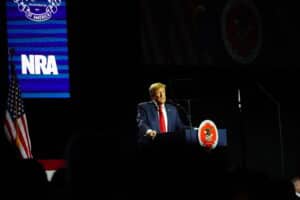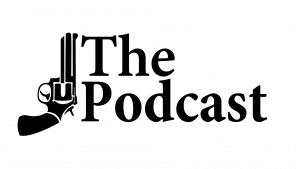Polylactic acid (PLA) plastic starts to melt at about 260 degrees Fahrenheit. When dozens of garage gunsmiths gathered in St. Augustine at the end of June, the humidity made the Florida heat feel as though it might actually reach that point and ruin the first-ever Gun Makers Match.
Luckily for the participants, guns made from 3D-printed parts are more durable than most might expect. And the technology has come a lot farther over the last few years than most might realize.
So have the people involved. What started as the passion project of a small group of committed internet activists has broadened into a vibrant and growing community. And that boiling hot Saturday at Ancient City Shooting Range marked the first time a bunch of them gathered in one place to commiserate and test out their creations.
People came from all across the country to join in. They traveled from as far away as Washington state, California, Pennsylvania, and New York to put faces to screen names and flesh out, in a rather literal sense, their online personas. About a hundred people crowded into Ancient City Shooting Range to meet and compete alongside media from outlets big and small.
The visibility was part of the point.
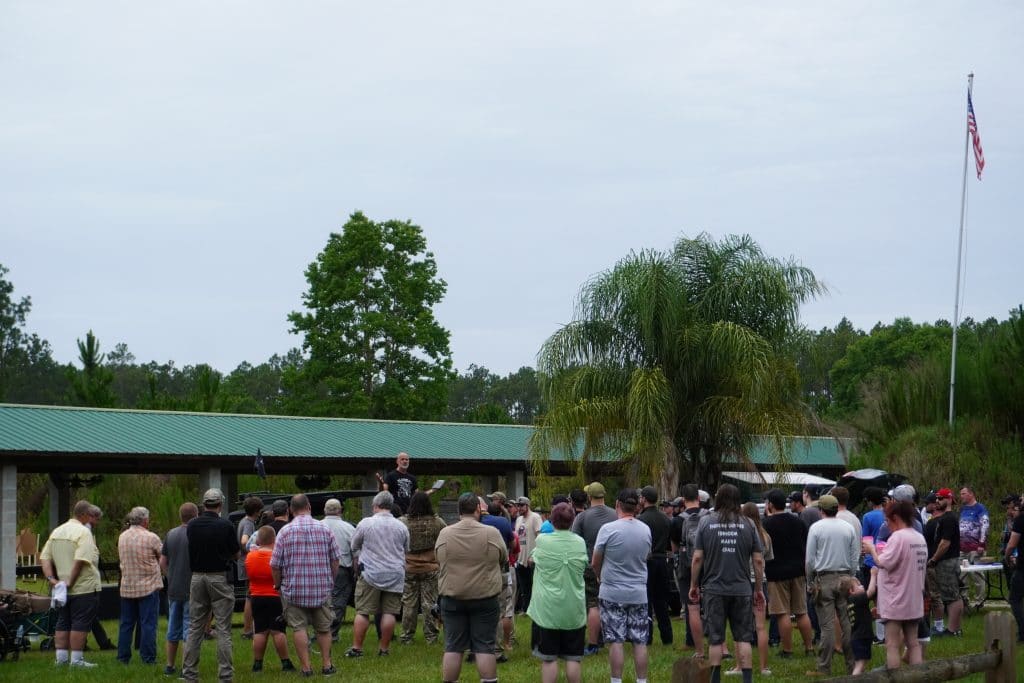
“A lot of the political and media rhetoric around gun making is this scary term ‘ghost gun,’ and the idea that people only are doing this to get away with something or to sidestep the law,” said Rob Pincus, a gun-rights activist who helped organize the event. “This forces a conversation because this clearly was not nefarious or criminal or hidden in any way.”
The event was mainstream enough to attract sponsorship from major gun groups. The Firearms Policy Coalition, Brownells, the Second Amendment Foundation, Serbu, and Gun Owners of America sponsored alongside the lesser-known organizers Are We Cool Yet? and Guns For Everyone.
“We had a lot of great companies and friends in the community and in the industry step up to support it and be part of it,” Pincus said. “A big part of it was showing that this is everyday gun owners, showing all the things that can be done legally. That forces the acknowledgment of the art and the craft and the development.”
That development has been quick. The guns varied wildly in manufacture and design. The ones created by finishing partially manufactured parts were practically indistinguishable from any gun you could pick up at your local gun store. Ones made almost entirely from 3D-printed parts, save for high-pressure components such as the metal barrels, are colorful and blocky. They look little like their retail counterparts and aren’t nearly as reliable. At least, not yet.
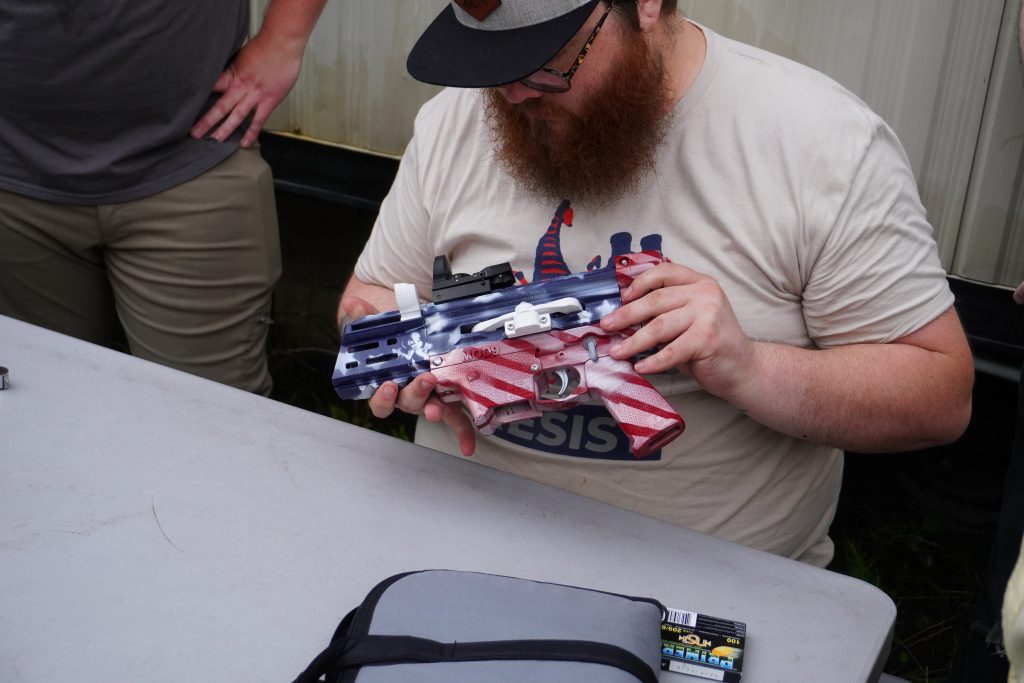
Timothy Seminare, a 28-year-old STEM educator who teaches 3D printing, said he got into printing guns mainly because of “the engineering aspect of it.” He said the hobby represents the bleeding edge of the technology and he enjoys pushing the limits of what materials like PLA plastic, which most of the guns at the match were printed from, can do.
“Overcoming the challenges that come with containing a gunshot going off within a firearm that is made out of something 3D printed, overcoming that challenge and making a viable product with something that years ago people were like ‘that’s not even possible,’ and now we have 50 competitors here doing exactly that, it’s just really cool to see the advancement of technology,” Seminare said. “And with guns, in particular, it’s just such an extreme level of stress to put on something that previously we were like ‘there’s no functionality to 3D printing.'”
He said he’s always been a tinkerer and enjoys working on his own car. While he described himself as a staunch Second Amendment supporter, his interest is mostly in the tech.
“At work, most of what I do is prototyping with it because we don’t trust it for functional purposes, and then I come here and I’m using a gun that I 3D printed,” Seminare said. “That’s pretty cool.”
Fifteen-year-old Mathew Fante traveled to the competition with his father. He has become something of a 3D-printing entrepreneur in his young age. After getting into the hobby two and a half years ago, he came up with a design to help make assembling the gas block on an AR-15 a bit easier. His dad, who is a licensed gun dealer, encouraged him to start selling the part and a favorable review from a popular YouTuber drove a bunch of sales that made Mathew want to do even more.
That’s when his dad took one of Pincus’s training courses. Pincus had started to take an interest in gun printing and wanted help learning the ropes, so Fante gave him a lesson over Zoom, and soon he was hooked.
Fante printed his own gun to compete and enjoyed doing it. But he said it was exploring what everyone else had built that he enjoyed most about the match.
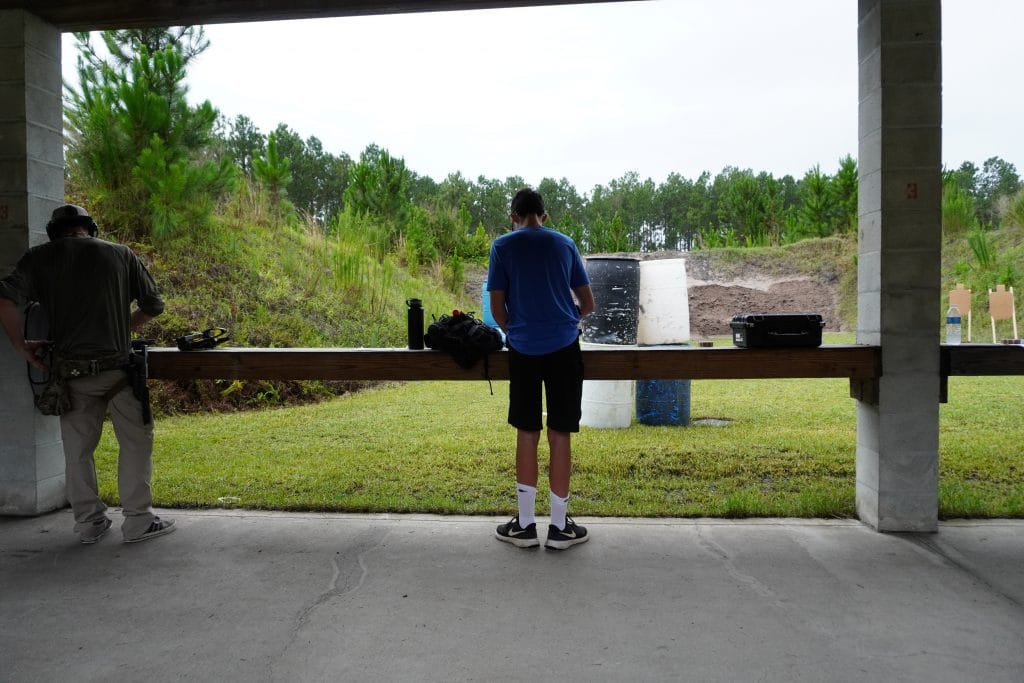
“I think it’s pretty cool how anyone can do it,” he said. “It’s so cool going through and seeing the builds. Some people make some small adjustments and some people build whole new designs.”
Drew Langston, a 25-year-old technician who works on recreational vehicles, said he too has always been drawn to building or tinkering with machines and that’s what brought him into printing guns. However, it was the idea of finally meeting some of the people he’d been talking with online that made him want to attend the match. He said that was as fun as seeing all the builds in action.
“It’s not quite as strange as I expected it to be,” he said. “It’s cool just to meet the people behind the ideas and actually get to know them more than just, you know, a screen name.”
But the participants’ focus on engineering, design, and fellowship doesn’t mean the community has softened on the radical ideas that birthed it.
“For me, it really is both,” Langston said. “The heart and soul, the good reason to do it, is the liberty side of it. The part of it that keeps me motivated and interested in coming back to it all the time is the creativity aspect.”
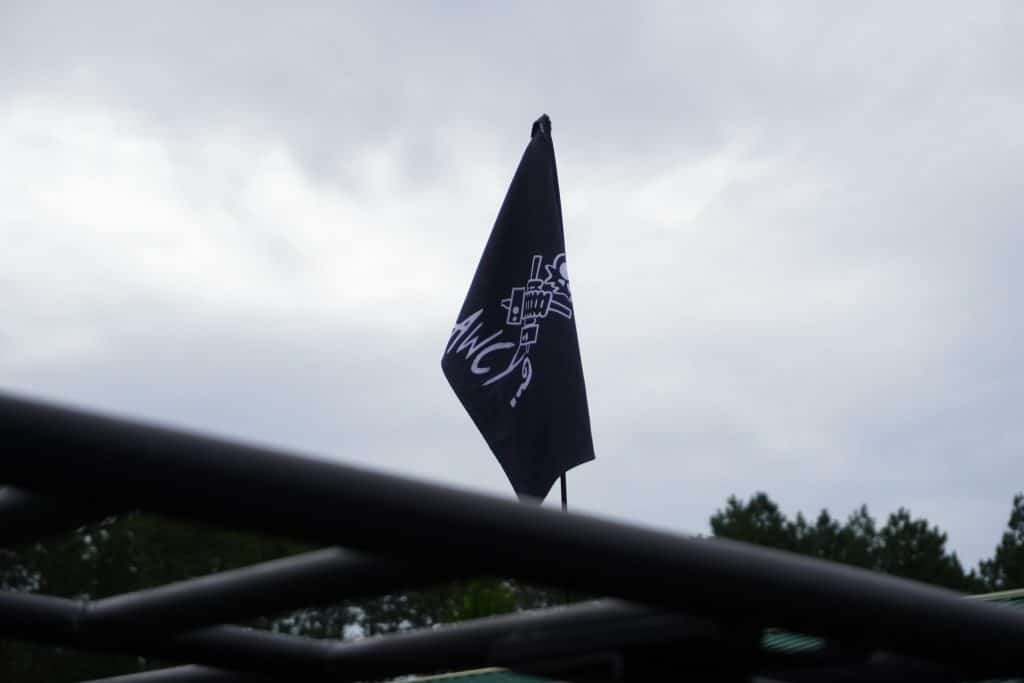
The second most popular topic of conversation at the match was political philosophy. People who print, mill, or drill guns into existence are, rather unsurprisingly, opposed to most gun regulations. The community is animated by an ethos that was summed up nicely when a 3D-printed gun pioneer, who often talks like a warrior-poet, quoted a literal one.
“[The forest rebel] has a tough decision to make: to reserve the right—at any cost—to judge for himself what he is called upon to support or contribute to,” wrote Ernst Jünger, a World War I veteran and German philosopher, in 1951’s The Forest Passage. “There will be considerable sacrifices, but they will be accompanied by an immediate gain in sovereignty. Naturally, as things stand, only a tiny minority will perceive the gain as such. Dominion, however, can only come from those who have preserved in themselves a knowledge of native human measures and who will not be forced by any superior power to forsake acting humanely.”
Jünger’s words were recited to eager onlookers by Cody Wilson, who created The Liberator in 2013 as a proof of concept for the practical application of 3D-printed gun parts. Wilson stepped away from his company and activism after receiving a 7-year probation sentence for pleading guilty to injury of a minor in a case stemming from a sexual encounter he had with a 16-year-old girl but returned to both shortly afterward. He gave away one of his company’s “ghost gunner” mini-CNC machines as a match prize.
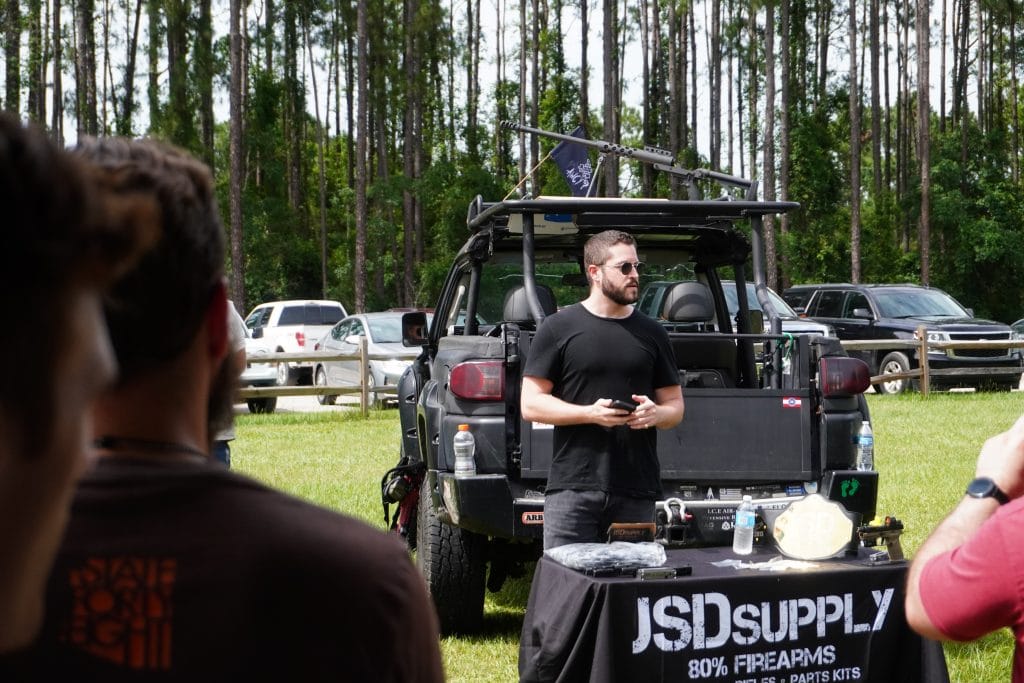
He said the match was something of a culmination of what he’d been working towards for years with his efforts to facilitate the sharing of gun designs online.
“If everyone could finally *see* what they’re all working on, it would lead to a boom in work and unpredictable directions of development,” Wilson said. “And look at all the colorful gun creatures we saw creeping from the primordial 3D ooze this weekend.”
The path from The Liberator to the Gun Makers Match has been long and winding. The same year the design was created, the State Department sent Wilson a letter stating sharing gun blueprints online violated an arms-export law. The department claimed such broad authority that, while publishing the plans for the Hydrogen bomb was perfectly legal, publishing this hundred-year-old technical drawing of one of the most popular handguns ever produced would have violated the law under its interpretation.
Wilson sued with backing from the Second Amendment Foundation. The State Department eventually agreed to settle and allow sharing of the digital gun files to officially resume, though sharing never really stopped and is likely impossible to choke off altogether. But state attorneys general have kept up the legal fight in the years since, periodically winning temporary victories to block distribution by Wilson again before losing once more.
President Joe Biden has picked up the fight against 3D-printed and homemade guns since entering office. He requested the ATF draw up new rules to try and ban the sale of unfinished gun parts and make the creation of “ghost guns”—guns without serial numbers—more difficult. The proposal would greatly expand the definition of what constitutes a “firearm” so that more and more basic building materials would require background checks during sale and engraved serial numbers.
If the rule were stretched to its theoretical limit, the ATF could require serialization for any block of bare metal sold with the intention of being made into a gun.
The Biden Administration proposal has garnered nearly 100,000, almost uniformly negative, public comments thus far. But some states have pushed the limits even further, with New Jersey attempting to once again ban the digital sharing of certain gun designs altogether.
“I’m sure, if they could, they would ban the knowledge of how to make guns,” said Jeff Rodriguez, one of the most famous designers at the match.
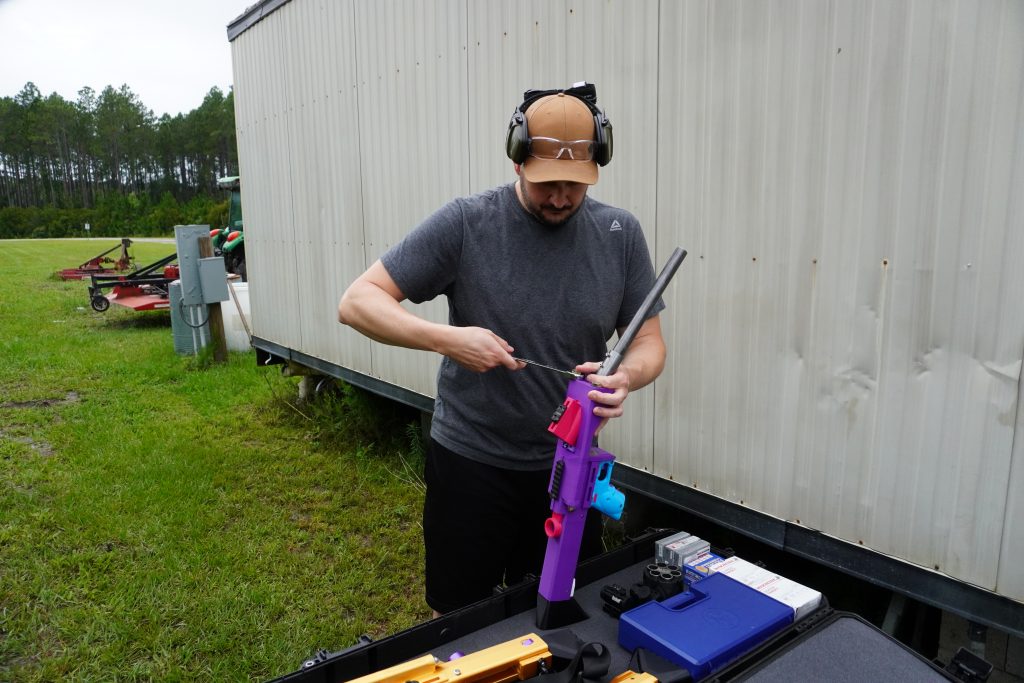
Rodriguez’s Cafe12 break-action shotgun is legendary among the 3D-printed gun community, and his Liberator12k revolving-cylinder shotgun attracted a crowd of excited onlookers. He acknowledged that creating simpler and more accessible gun designs likely means some people he doesn’t want to use his designs probably will.
“It’s easier for everyone,” he said. “And, as part of that, people I don’t want to get them will also be able to make them easier. But, on balance, there are way more good people than bad.”
He argued people abusing or misusing guns, or other dangerous things, are inevitable in a free society.
“The basis for freedom is: Don’t shut down good actors because there are bad actors out there. There are bad actors out there, they’ve been there, they’re going to be there, and that’s never going away. It’s the human condition.”
This logic matches well with the ethos in another pioneering—and often demonized—sector: cryptocurrency. That’s why Rob McNealy, who co-founded the gun-retail-focused cryptocurrency project TUSC, signed on to sponsor the event in addition to the more traditional gun groups.
“Just like cryptocurrency is decentralizing and insulating payments,” he said, “I believe the 3D-printed and DIY gun community is doing the same thing. It’s just a way to decentralize the manufacture of the means of self-defense.”
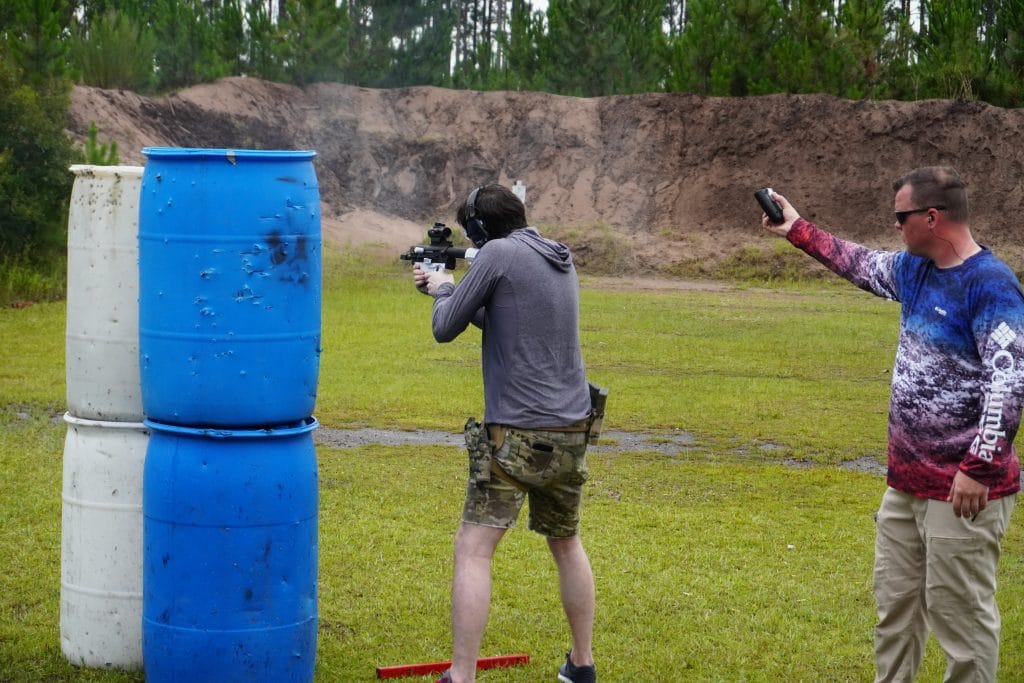
He viewed the event as something akin to a meeting as part of a modern revival of a gun-making tradition that stretches back to even before the founding era.
“This event is very important because it’s trying to revive a lost tradition in the United States of being able to make and manufacture things,” McNealy said. “The concept of making your own guns is making a resurgence now, but, historically, people used to do it all the time 40, 50, 60 years ago. And I think having lost that has actually set us back.”
Wilson couched 3D-printed gun development in religious terms as well, though with added flare from yet another 20th-century poet.
“What rough guns now slouch toward Bethlehem to be born?” he said.
The answer remains to be seen, but the ones that have already made it from imagination to reality are plenty fascinating. In an industry where innovation is usually iterative rather than revolutionary, a collection of online hobbyists have advanced the design of 3D-printed guns to the point where all the firearms made almost exclusively of printed parts managed to make it through a side match without any catastrophic failures, and some made it through without issues at all.
Ultimately, many of the competitors adopt a kind of live-and-let-live mindset. They don’t believe criminals will comply with whatever gun laws legislators create, and they don’t view themselves as a threat to anyone. They’re more worried about government overreach than they are about the wrong people being able to print guns.
“I’m much more concerned that the government could disarm its people,” Rodriguez said. “I think once you’re disarmed, you’re a slave.”
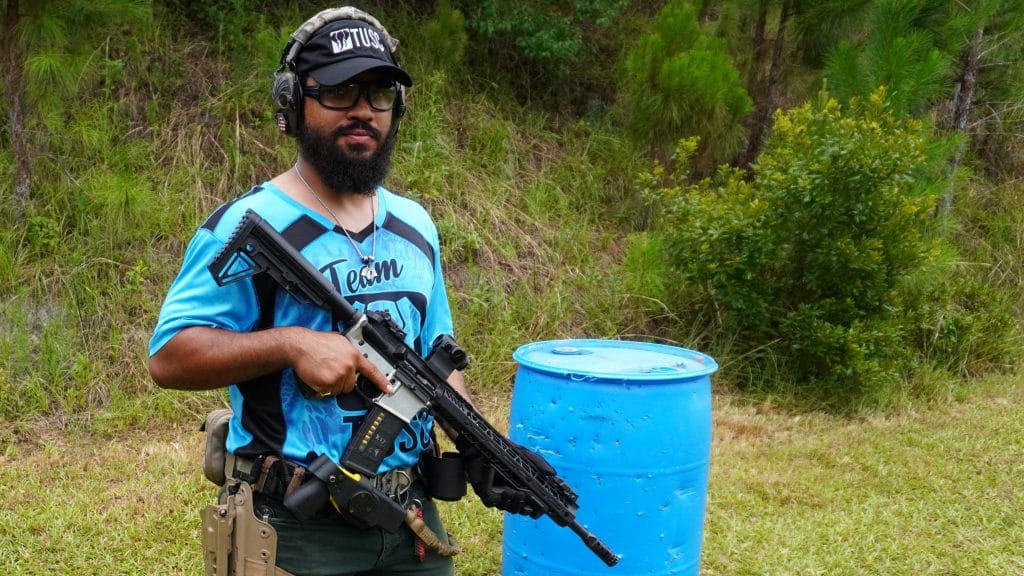
“I view it as a freedom thing,” said Christian Nelson, who drove up from Miami to attend the match. “It’s like, who the hell are they to tell me anything? We’re not trying to start some BS or whatever. We’re just trying to protect ourselves, our family, our livelihood, and our way of living.”
Editor’s note: If you want to read about Stephen Gutowski’s personal experience at the Gun Makers Match, check out this member-exclusive piece.

